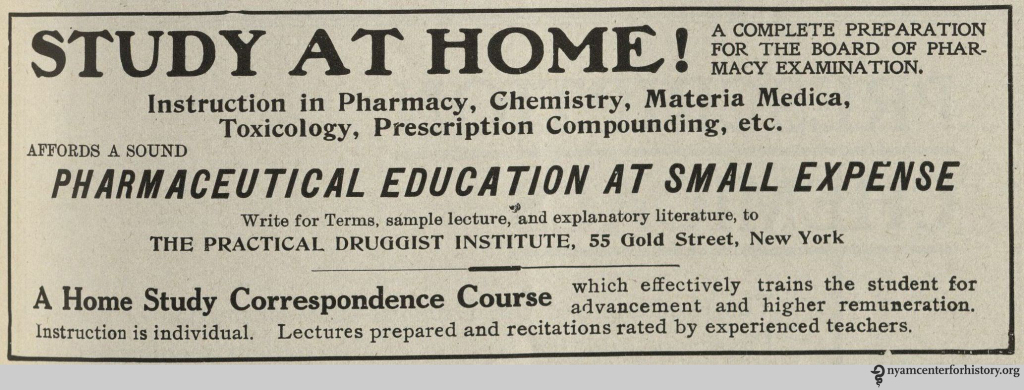Oh, What’s in a Name? - Definitions of Distance Ed
Published by: WCET | 5/11/2017
Tags: IPEDS, Managing Digital Learning, Online Learning, Practice
Published by: WCET | 5/11/2017
Tags: IPEDS, Managing Digital Learning, Online Learning, Practice
“What’s in a name? That which we call a rose
By any other name would smell as sweet.”
Romeo and Juliet (II, ii, 1-2)
And by name, I mean definition. And by definition, I mean the definition of distance education.
There are a myriad of definitions for “distance education,” “distance education course,” and” distance education program.” Various agencies, which require reports from colleges and universities on the numbers/types of distance education courses, have somewhat different perspectives on what “counts” as distance ed.
Over the last few weeks I chatted with a few of our WCET friends about their thoughts on the variety of definitions and what, if anything, they would recommend changing.
We’ve come a long way from what distance ed used to be: correspondence courses where one could learn new information through the mail. This has rapidly shifted, says Tony Bates in a recent blog post, from text-based LMS’s, and with “more synchronous approaches either replacing or being  combined with asynchronous learning (another definition of ‘blended’), and the increasing use of streamed audio and video.” He is currently conducting a survey pilot on online or distance ed courses and programs at Canadian postsecondary institutions, where he discovered there is very little general agreement on terms such as distance education, online courses, blended course, hybrid courses, etc.
combined with asynchronous learning (another definition of ‘blended’), and the increasing use of streamed audio and video.” He is currently conducting a survey pilot on online or distance ed courses and programs at Canadian postsecondary institutions, where he discovered there is very little general agreement on terms such as distance education, online courses, blended course, hybrid courses, etc.
Last week, we released our analysis of the most recent distance education enrollment counts from IPEDS, the U.S. Department of Education’s series of surveys. IPEDS defines distance education as “education that uses one or more technologies to deliver instruction to students who are separated for the instructor and to support regular and substantive interaction between the students and the instructor synchronously or asynchronously. Technologies used for instruction may include the following: Internet; one-way and two-way transmissions through open broadcasts, closed circuit, cable, microwave, broadband lines, fiber optics, satellite or wireless communication devices; audio conferencing; and video cassette, DVDs and CD-ROMs, if the cassette, DVDs, and CD-ROMs are used in a course in conjunction with the technologies listed above.”
This definition is consistent with the Code of Federal Regulations, and some of the accrediting agencies build on that definition. Putting aside that the definitions, like those used by other entities, may be slightly outdated for today’s technologies.
Definitions of distance education courses are more diverse. It seems the biggest difference between these definitions is the amount of the course delivered via some sort of distance technology. The amount varies from 100%, to 75%, 50%, etc. Some do not give a set percentage.
Institutions are required to report to various agencies, such as their accreditors, on the programs and courses. These staff report different data to different agencies due to the variety of definitions or pick one definition and report it to everyone.
I sent the following questions to be mulled over by a few, select higher education experts.
Marshall Hill, Executive Director, National Council for State Authorization Reciprocity Agreements (NC-SARA), told me that it is unfortunate that such variations exist. There are different perspectives that led to the variety of definitions, but he feels we should be able to agree upon a single definition. He advised that while it is important for a set standard, it’s also important to allow for flexibility so institutions can be innovative in the realm of distance education and serve their students in unique ways.
Marshall brought up a specific area that needed improvement (saying that the definitions today don’t seem to match the reality of what is happening in education): blended or hybrid courses (which I anecdotally believe are becoming more and more popular). As Tony Bates said in his blog post, the “terminology often struggles to keep up with the reality of what is happening…”
Jon Becker, Director of Learning Innovation and Online Academic Programs & Associate Professor, Educational Leadership with Virginia Commonwealth University’s ALT Lab, took a practical approach to his recommendations. Jon concentrated on how students would schedule and attend courses and chose place and time as classifiers. Courses are fully or partially online (based on whether a student is ever physically in the class location) and the course is either synchronous or asynchronous. This creates a grid, which categorizes courses:
| Synchronous | Asynchronous | |
|
Ever face-to-face |
A | B |
| Fully online | C | D |
Jill Buban, Senior Director of Research & Innovation with the Online Learning Consortium (OLC), mentioned that there has been a buzz on this topic at recent higher education conferences. Distance education as a term still depicts the overall variety of offerings that can fall under that umbrella, as a field, we use these various offering definitions interchangeably (i.e. blended, online, hybrid, etc.). There is a lack of unified terminology that we can all use, and the clarity is needed. Jill and I discussed how she has noticed that recent accreditation standards (which have the same requirements for outcomes for face-to-face and online classes) are starting to make institutions push the envelope a bit. It’s easier to have all students (whether face-to-face or online) use the same digital tools and platforms rather than having different tools based on location. This is bringing digital learning, a phrase that is also causing a buzz in higher ed, to all types of distance education courses and programs.
Ken Sauer, Senior Associate Commissioner and Chief Academic Officer Indiana Commission for Higher Education, has examined this issue extensively and provided excellent the background information to me on this topic. Ken explained the major complications affecting higher education administrators due to the definition quandary. He was motivated to conduct research in this area when he compared lists of distance education programs in Indiana to the list of programs with their regional accrediting agency; they were different. Ken recommends a definition of distance education programs based on the percentage of the course which is online versus in a physical location. One of his major considerations: assessment of distance education and how proctored exams impact whether a course is deemed fully online.
Based on his research and conversations with multiple individuals, organizations, and institutions, Ken has developed a set of recommendations in this area to begin the conversation toward developing a common definition of distance education. These will be released shortly, and WCET is excited to be involved in that conversation. Watch for more information on Ken’s research and recommendations.
Near the end of our conversation Marshall Hill centered this entire debate for me: our focus here should be on how to best serve students. Colleges and universities should not decide how to deliver education based on what they need to report, but rather what will best meet their student’s needs. And then we (meaning accreditors, government agencies, policy geeks, etc.) should figure out how to count that. Not the other way around.
Ken’s question about assessments is important. If a class is 100% online but requires face-to-face, proctored exams, then does that change the percentage?
Jon provided a wonderful quote that he used on the cover letter for his application for his current job:
“… If formal schooling had existed in the U.S. when Gutenberg invented the printing press, would there have been lots of discussion and hand-wringing about the inevitable move towards print-based learning? Would formal learning organizations have created new units and positions around print-based learning? …I begin wondering if, someday, we will look back upon the present time and laugh at the idea that we used terms like “online learning” and/or “hybrid courses.””
Should we differentiate between distance education and other types of education? Is education simply… education whether you are physically in a classroom or not?
It turns out, my Shakespearian inspiration is not quite apt in this case. Can we use a blanket term like “distance education” to refer to the assorted forms of distance education that exist (or will it even exist in the future)?
What would or wouldn’t you change about the various definitions of distance education out there? Let me know in the comments or tweet us @wcet_info!

Lindsey Downs
Manager, Communication – WCET

Photo Reference: Ad published in The Practical Druggist and Review of Reviews, volume 35, number 2, February 1917. Photo from https://nyamcenterforhistory.org/tag/pharmacy/
3 replies on “Oh, What’s in a Name? – Definitions of Distance Ed”
[…] Downs, Manager of Communications for the WICHE Cooperative for Educational Technology (WCET), published a blog post today about definitions and distance education. It’s a really good post and you might choose to read that and come back here for […]
Still an excellent question. More than 10 years ago, I wrote that “the terms “Distance Education” and “Distance Learning” are slowing being abandoned because they no longer adequately describe the range of educational options and delivery methods offered today. I’m surprised we are still talking about it.
One term I was happy to see NOT referenced in this post is the term “MOOC” (Massively Open Online Course). A MOOC is much different than a traditional distance courses.
https://kathykeairns.com/2014/07/10/distanceonline-education-%E2%89%A0-mooc/
That’s a great question and thanks for the post. My biggest concern for the definition of DL is around reporting. There are so many definitions and especially around the hybrid/blended that it is hard to gather consistent data. I’ve seen research that a blended format has the best results for the student (as opposed to traditional or fully online). But if we don’t have accurate data on the type of delivery, then how can we do the comparison. Some definitions say that an online course can be coded so if it is at least 80% online, but in my former job we would only consider it an online course if it was 100% online. What is the percentage then for a hybrid or blended course? 25%? 50%? less than 80%? If the definition doesn’t state specifically, then you have confusion. What about a 3 hour credit course that meets one day per week (67% online)? What if they meet two days per week (33% online)?
I agree that a transcript should simply list the course, not how it was delivered. But for the information systems, we need better definitions so that our data is correct and consistent across systems and across states.